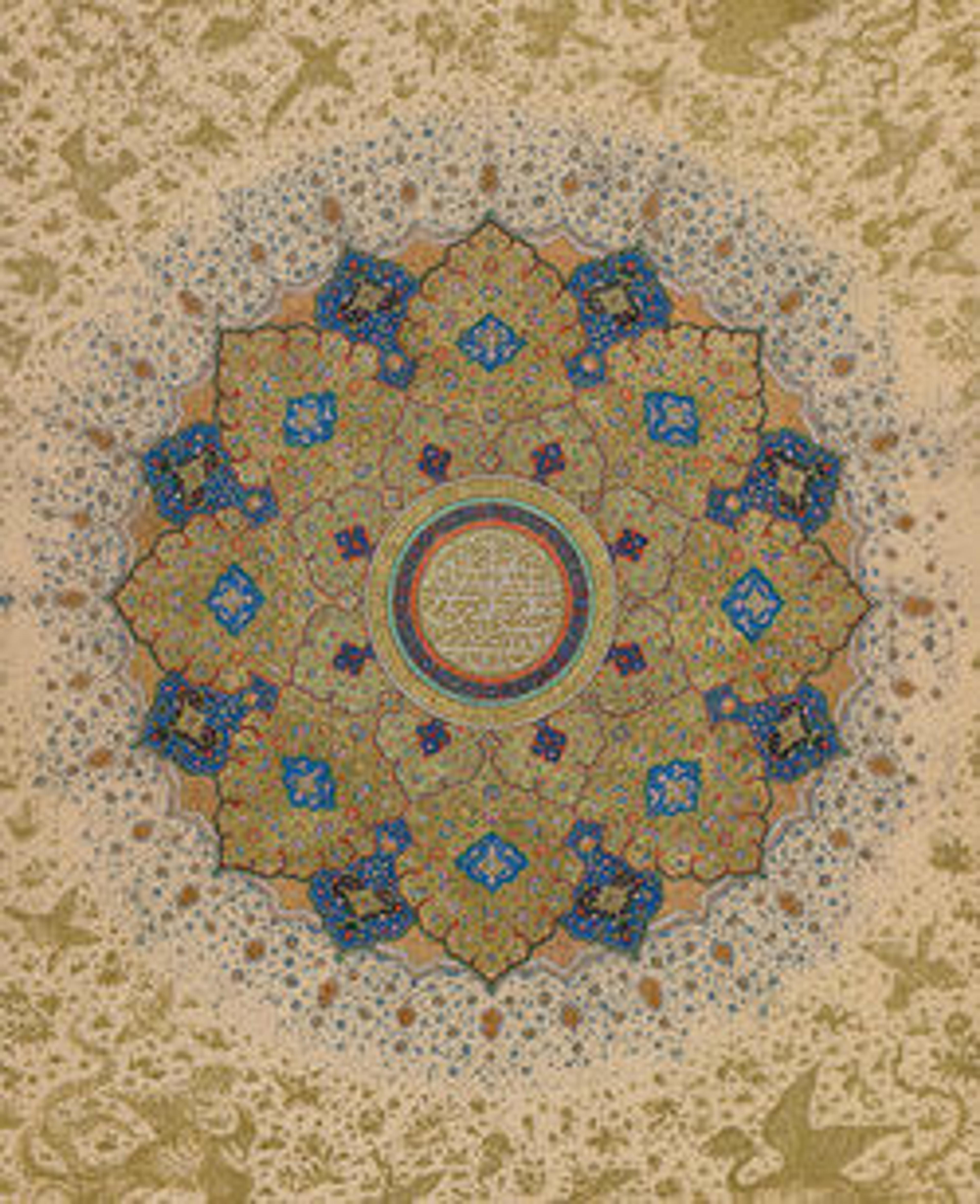Pear-Shaped Bottle with a Bullock Design
Very few pieces of Iranian lusterware survive from the fifteenth and sixteenth centuries, but this technique was revived in the seventeenth century. During this period, lusterware was produced in a relatively limited range of shapes, including elegant bottles, such as the one here, as well as dishes, bowls, cups, ewers and sand-shakers.
This bottle would have been made toward the end of the reign of Shah ‘Abbas II (1642–1666), a period of heightened artistic activity in which new ideas from Europe and India found favor. Thus, the eclectic confluence of the Indian zebu bull, the Persian peacock, and the Chinese deer on one bottle would have been admired as much as the elegant shape and lustrous glaze.
This bottle would have been made toward the end of the reign of Shah ‘Abbas II (1642–1666), a period of heightened artistic activity in which new ideas from Europe and India found favor. Thus, the eclectic confluence of the Indian zebu bull, the Persian peacock, and the Chinese deer on one bottle would have been admired as much as the elegant shape and lustrous glaze.
Artwork Details
- Title: Pear-Shaped Bottle with a Bullock Design
- Date: second half 17th century
- Geography: Made in Iran
- Medium: Stonepaste; luster-painted on opaque white glaze
- Dimensions: H. 10 in. (25.4 cm)
- Classification: Ceramics
- Credit Line: Edward C. Moore Collection, Bequest of Edward C. Moore, 1891
- Object Number: 91.1.168
- Curatorial Department: Islamic Art
More Artwork
Research Resources
The Met provides unparalleled resources for research and welcomes an international community of students and scholars. The Met's Open Access API is where creators and researchers can connect to the The Met collection. Open Access data and public domain images are available for unrestricted commercial and noncommercial use without permission or fee.
To request images under copyright and other restrictions, please use this Image Request form.
Feedback
We continue to research and examine historical and cultural context for objects in The Met collection. If you have comments or questions about this object record, please contact us using the form below. The Museum looks forward to receiving your comments.
